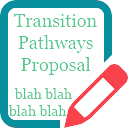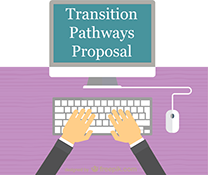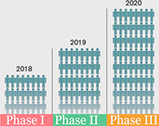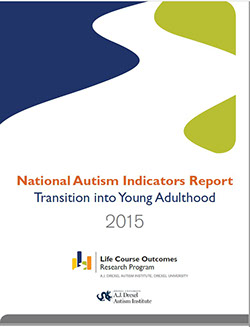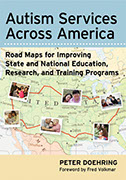Define core components
September 23, 2016
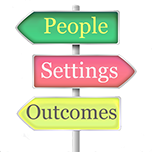 To begin to outline a potential program that involves the delivery of services, we sought to establish several guideposts. These guideposts were adjusted over a period of several months as we examined the advantages and disadvantages of different options.
To begin to outline a potential program that involves the delivery of services, we sought to establish several guideposts. These guideposts were adjusted over a period of several months as we examined the advantages and disadvantages of different options.
These guideposts were firmly in place before I shifted into the next phase of much more detailed proposal development. These guideposts were also critical to beginning to broadly estimate the level and type of staffing support needed, the most significant determinant of costs.
Population
Possible directions
Who did we intend to serve? People on the autism spectrum? Would we exclude people with those who might also have related intellectual disabilities, behavioral challenges, or mental health conditions? Are there any populations who would especially benefit?
Guideposts
The foundation had expressed specific interest in a subset of the population of people with autism: young adults on the cusp of living or working independently but who were not planning on pursuing a traditional degree program. We knew that this was a worthwhile population to focus on; recent high school graduates had been identified by the National Autism Indicators Report as in need of services and supports. As a result, we begin to focus more specifically on students in their last year of high school and first year post high school as we considered potential partners and funding opportunities.
An important lesson I also applied here was that many practices and programs that help to people with autism can also help those without autism but with comparable levels of developmental disabilities. Being more inclusive made it easier to incorporate another possible lesson: how tailoring programs to include more potential participants can help to create a more reliable pipeline of referrals and thus ensure program sustainability, if not program growth. So whenever possible, I sought to define the eligible population as those with autism and related conditions. thus ensuring a steady stream of eligible applicants.
Outcomes
Possible directions
What outcomes did we hope the program participants will have achieved by the end of the program? Given these outcomes, what kinds of skills and behaviors did we hope to address? Social skills? Academic skills? Employment skills? Skills needed to live independently? Are any of these potential breakthrough skills (i.e., critical skills that adults are on the threshold of acquiring), or pivotal skills (i.e., skills that will open up other opportunities for growth)?
By considering the characteristics of our specific target population, could we perhaps narrow the range of outcomes and skills? And are there practices associated with these desired outcomes that we might prioritize (for example, because they are evidence-based)?
Guideposts
We then began to set broad priorities for the curriculum: we identified broad outcomes related to living independently as adults. We also recognized early on that some adults may want to begin working immediately, while others might also pursue continuing education: this led to the decision to create an Employment Pathway and a College Pathway. Using these outcomes, we generated "tracks" that could be combined in different ways. I began to work backwards to imagine examples of specific activities that would support these tracks.
An important lesson I applied here was the role of well-controlled needs assessments to suggest outcomes we might strive for, for the individuals participating in this new program. In this case, the National Autism Indicators Report helped to generate specific outcome statements around which our communications strategy would pivot (see Other Links: Diagram summarizing tracks, outcomes, and associated activities). Gaps identified in post-transition employment and community engagement appeared especially important to target.
Settings
Possible directions
Considering our population, desired outcomes, and targeted skills which setting provides the most natural opportunities in which we might offer services? In the community? In a school or college? On the job? In the home?
Guideposts
As we began to define options regarding the specific population we might serve, the outcomes for program participants, and the associated activities, we could begin to focus on a subset of potential settings. In this case, we knew that we would need to support participants in real jobs, while recognizing that participants may need more extensive training and support during an initial phase.
A setting that could initially support a mix of push-in support and pull-out intensive training appeared ideal. The National Autism Indicators Report also revealed that graduates from traditionally under-served groups were especially vulnerable, and so we considered programs that relied on public funding rather than private fees. These factors, together with several others, led me to recommend basing at least the first year of the program on some kind of community-based, public school classroom.
X
My Presentations and Publications
 (2016). Incubating programs of services and training for people with develop-mental disabilities: A new partnership for UCEDDs, community-based providers, and philanthropists. Association of University Centers on Disability, Washington, DC.
(2016). Incubating programs of services and training for people with develop-mental disabilities: A new partnership for UCEDDs, community-based providers, and philanthropists. Association of University Centers on Disability, Washington, DC.
Guideposts
![]() Straight Lines Use large, well-designed surveys to identify critical gaps in access to basic care, and to set benchmarks for new programs
Straight Lines Use large, well-designed surveys to identify critical gaps in access to basic care, and to set benchmarks for new programs
![]() Simple Steps Consider broadening eligibility requirements, since many practices and programs for ASD are effective for those only with ID
Simple Steps Consider broadening eligibility requirements, since many practices and programs for ASD are effective for those only with ID
![]() Simple Steps Ensure a sustainable pipeline of participants by carefully matching programs to the unmet needs identified in the region
Simple Steps Ensure a sustainable pipeline of participants by carefully matching programs to the unmet needs identified in the region
